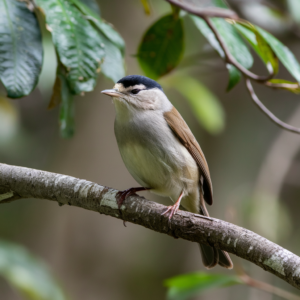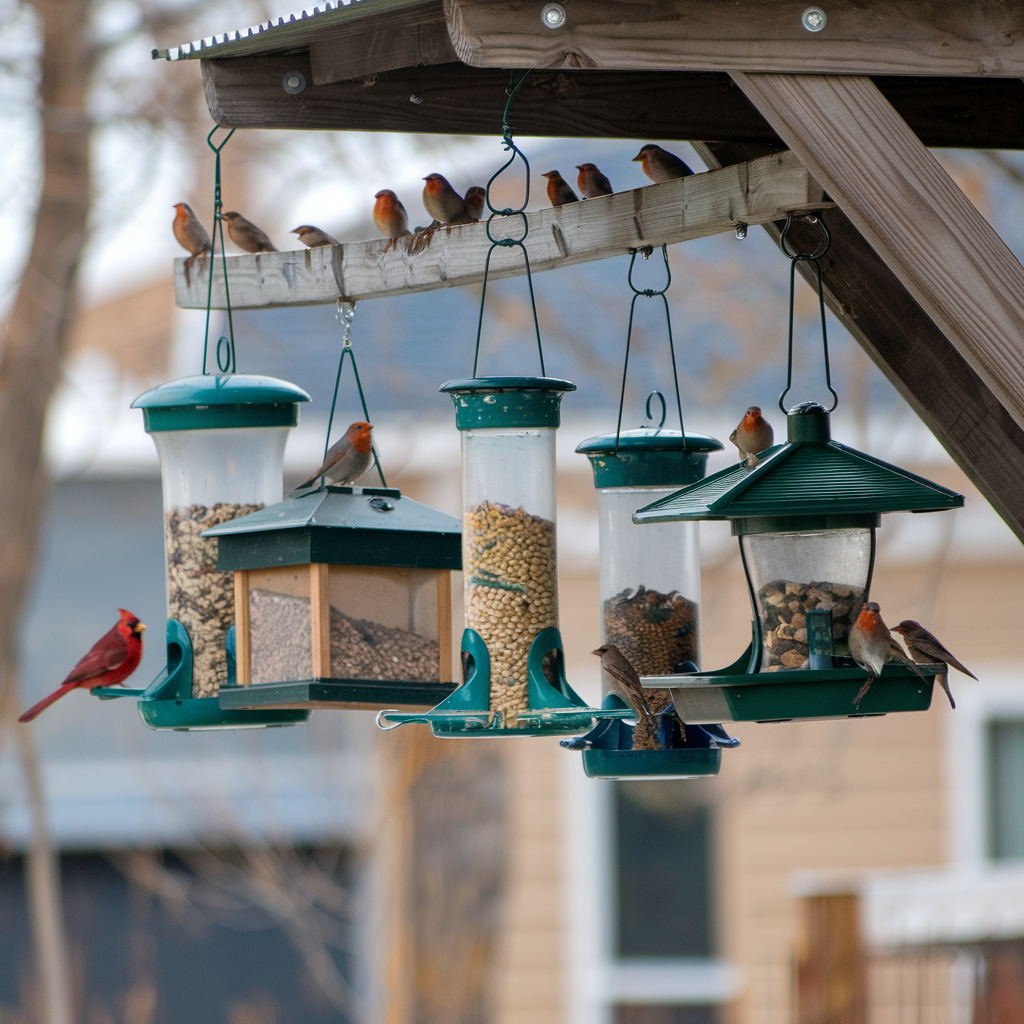Bird feeders offer an excellent way to observe and interact with nature, bringing many feathered friends to our backyards. However, many people have one common question: How do birds find bird feeders? Birds are incredibly adaptive creatures with a range of keen senses that help them locate feeders, even in unfamiliar settings. In this article, we’ll explore the fascinating mechanisms birds use to find feeders, the factors affecting feeder visibility, and how to optimize your bird feeder setup to attract the most visitors.
How Birds Use Their Senses to Find Feeders
Birds have evolved with sharp sensory abilities that allow them to locate food sources, including feeders, even in new environments. Let’s dive into the primary senses they rely on.

Visual Cues
Birds have exceptional vision, allowing them to spot feeders from a significant distance. In fact, birds can see a broader spectrum of colors than humans, including ultraviolet light, which enhances their ability to notice distinct colors and shapes in their environment. Brightly colored feeders, or feeders surrounded by vibrant flowers and plants, can help attract birds more quickly.
Interesting Fact: Birds like hummingbirds are particularly drawn to red, while goldfinches are attracted to yellow. Incorporating these colors into your bird feeder or its surroundings can make a big difference in how fast birds discover your feeder.
Auditory Cues
Hearing plays a critical role in how birds locate food sources. Birds constantly listen to the sounds around them, including the chirps and calls of other birds. A commotion caused by feeding birds can serve as a beacon, drawing in additional birds from the surrounding area. The sound of seeds rustling or a birdbath with moving water nearby can also attract birds to your feeders.
Bird Behavior Around Feeders
Birds rely not only on their senses but also on social and learned behaviors to find food.

Social Interaction and Communication
Birds are highly social creatures, and their interactions often signal food availability. When birds see others congregating around a feeder, they quickly learn that it’s a reliable source of sustenance. This indirect communication allows birds to share food sources without explicit vocalizations.
One study shows that birds, especially those in urban areas, often follow the flock to food sources they haven’t previously discovered on their own(
Memory and Learning
Birds have strong memory capabilities that help them remember the locations of feeders. Some birds, such as chickadees and nuthatches, even use spatial memory to recall where food is hidden in trees or shrubs. Once a bird discovers your feeder, it will remember the spot and return regularly to check for more food(
Case Study: Research on Clark’s Nutcrackers revealed that these birds can remember thousands of food cache locations months after hiding the food. Similarly, birds visiting feeders often develop a routine, revisiting known feeders at specific times throughout the day.
Feeding Habits and Preferences
Birds have specific feeding preferences based on the type of food available and the design of the feeder. Some species prefer certain seeds, like black oil sunflower seeds, while others are drawn to suet, nectar, or mealworms. Understanding the preferences of local birds can help you tailor your feeder setup to attract a diverse array of species(
Factors Affecting the Time It Takes Birds to Find Feeders
While birds may find some feeders almost instantly, others might take weeks or longer to discover. Several factors influence this discovery process.

Feeder Location
The location of your feeder is one of the most critical factors in determining how quickly birds will find it. Placing feeders in open, visible areas will make them more noticeable to birds flying overhead. Additionally, positioning feeders near trees or shrubs provides cover and makes birds feel safer while they eat. Ensure the feeders are placed at least 10-12 feet away from trees if squirrels are a concern.
| Feeder Location Tips | Benefits |
|---|---|
| Place feeders near trees or shrubs | Offers protection from predators |
| Avoid placing feeders near windows | Reduces the risk of bird collisions |
| Hang feeders at least 5-6 feet above the ground | Keeps birds safe from cats and other predators |
Type of Feeder and Food Offered
The type of feeder and the food you provide will affect which birds visit and how quickly they discover it. For example, tube feeders are perfect for small songbirds like finches, while platform feeders may attract ground-feeding birds like sparrows(
Quick Tip: If trying to attract a specific species, offer their favorite foods. Hummingbirds, for instance, are most attracted to sugar water in a nectar feeder, while woodpeckers prefer suet.
Time of Year and Migration Patterns
Migration patterns play a crucial role in when birds will visit your feeders. You may notice increased feeder activity in spring and fall as migratory species pass through your area. During the winter, birds in your region rely more on feeders, especially when natural food sources are scarce.
Neighborhood Competition
If you live in a suburban or rural area, your neighbors may also provide food for local birds. This competition can affect how quickly birds discover your feeder. If other feeders are well-stocked nearby, birds might take longer to venture to yours(
Enhancing Bird Feeder Visibility
Increasing the visibility of your feeder can help birds locate it faster. Here are a few strategies to make your feeder more noticeable.

Color and Movement
As mentioned earlier, color plays a significant role in attracting birds. Consider placing bright ribbons and flowers or painting the feeder to make it stand out. Movement, such as swaying ribbons, can catch a bird’s eye from a distance(
Sound Attractants
Adding sound elements to your yard can make it more inviting to birds. A bubbling birdbath or small fountain can signal to birds that food and water are available, encouraging them to visit more frequently.
Food Variety
Offering a variety of foods, such as mixed seeds, suet, mealworms, and fruit, can attract a broader range of bird species. Different birds have different preferences; the more options you provide, the more likely are to you attract a diverse population.
Avoiding Predators
Birds are cautious creatures, always on the lookout for potential threats. Hanging feeders high or using squirrel baffles can help create a safer feeding environment(
Common Challenges in Attracting Birds to Feeders
At times, attracting birds to feeders can be challenging. Here are some common obstacles and solutions.

Why Won’t Birds Come to My Feeder?
It can be frustrating when birds don’t visit your feeder, but several factors might be at play. For example, the placement of the feeder is critical; if it’s located too close to human activity or predators like cats, birds may avoid it. Stale food or feeders that aren’t regularly cleaned can also be a deterrent. Birds prefer fresh, high-quality food, so they frequently replace old seeds with fresh ones.
Another potential issue is the feeder type. Different birds are attracted to specific feeder designs. For instance, finches prefer tube feeders, while larger birds like doves may avoid them. Experiment with a variety of feeders and food types to attract more species(
Troubleshooting Tips
If birds aren’t coming to your feeder, consider relocating it to a more open and visible location where birds feel safe. Ensure the feeder is easily accessible for refilling and cleaning, as hygiene is essential in keeping birds healthy. Also, keep the area free of debris that might harbor predators(
Use quality seeds like black oil sunflower seeds, which are highly favored by most bird species. Additionally, sprinkling seeds on the ground near the feeder can encourage birds to explore the area, making them more likely to find the feeder itself(
FAQs
How long does it take birds to find a new feeder?
Birds can find a new feeder within hours, but depending on various factors, it can take up to several weeks. If you place a feeder where birds are already foraging, such as near trees or shrubs, they may locate it faster. However, it might take longer in rural areas with fewer human interventions.
Sprinkling some food on the ground around the feeder can help speed up the process, as birds are more likely to notice it when they are foraging on the ground(
Can birds smell bird food?
While birds have nostrils and can detect certain smells, they rely predominantly on their keen vision and hearing to locate food sources. Their sense of smell is not well-developed compared to other animals. Birds mainly use their eyes to find feeders and recognize familiar shapes and movements(
Do birds tell each other where food is?
Yes, birds often communicate indirectly about food sources. When one bird discovers a feeder, it will attract other birds simply by its presence and behavior. Birds can hear the sounds of different birds feeding and notice the commotion, which serves as a cue that food is nearby(
In some species, particularly social ones like sparrows or starlings, flocks often travel together and feed in groups, making it more likely for multiple birds to find a feeder quickly(
What’s the best type of bird feeder?
The best bird feeder depends on the species you want to attract. Tube feeders are great for smaller songbirds like finches and chickadees, while platform feeders are ideal for larger birds like doves or jays. Nectar feeders are best for hummingbirds and other nectar-feeding species.
Conclusion
Birds are highly adaptable and use a combination of senses—primarily vision and hearing—to find feeders. Understanding their behavior and preferences and optimizing feeder placement, food variety, and visibility will help you attract a wide variety of bird species to your yard. Whether you’re a seasoned bird watcher or new to the hobby, setting up a feeder can offer endless opportunities for observation and connection with nature. With patience and a few adjustments, your feeders will soon become a bustling hub of bird activity.
By following these tips, you can better appreciate birds’ unique skills in finding food and creating a welcoming environment that birds will flock to year-round.

